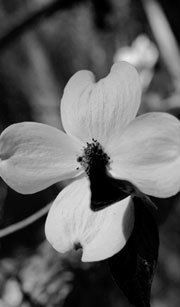 |
||
 |
||

 |
• HOME • GENERAL STORE • NATURAL HERITAGE • HISTORY, CULTURE & CRAFTSMANSHIP |
||||
|
Natural Heritage
• Trees & Shrubs of the Ozarks |
|||||
| Trees & Shrubs Index • Oak • Hickory • Walnut • Catalpa • Loblolly Pine • Red cedar • Elderberry • Sumac • Sassafras • Persimmon • Osage-orange • Mulberry • Witch Hazel • Sarvisberry • Dogwood • Redbud • Crape Myrtle • Mimosa Natural Heritage Index • Fishing • Hunting • Camping • Conservation • Bass Pro Blog • Hills & Hollows • Rivers & Lakes • Springs • Caves • Rocks & Fossils • Trees & Shrubs • Plants & Herbs • Hill Critters • Flyin' Critters • Water Critters • Snakes & Such • Forgotten Critters |
|||

Somehow, nothing better captures the spirit of these old hills, these pine forests of the Ozarks.
Stands of loblolly — which are also called Yellow Pine — often crowd out the sunlight itself, leaving only shadows and a thick, spongy blanket of reddish-brown needles.
Singularly, the trees reach a great height, often surpassing 90 feet. Their shape is distinctive, creating an almost-umbrella profile.
Hardy as they are, Pinus taeda seems to prefer certain altitudes and certain soil types, though in the rugged Ozark Mountains, loblolly may be found thriving upon mostly rock.
Newcomers — tourists to the Ozarks, bent on visiting Branson — might concede the dogwood or perhaps the white oak as the tree of these hills.
But leave Branson and the busy four lanes of Highway 65 behind.
Walk to the top of Bear Den Mountain out near Mincy.
Travel on Highway 76 — no, not the Strip, the world’s longest parking lot — but East Highway 76, out toward Willow Springs.
Or better yet, get out into Shannon County, Missouri, where city lights are forgotten and the wind and the river and the night sky are immediate and real and inescapable.
And walk beneath the stands of loblolly.
Take a deep breath and then just listen to the wind play games in the soft needles and branches above you.
And you may just begin to understand these hills.
— by Joshua Heston
January 24, 2010
________________
Loblolly Pine (Pinus taeda)
Size: 90-110 feet tall; needles 6 to 9 inches long.
What to look for: needles in three’s, stiff, yellow-green; cones red-brown, with sharp triangular prickles; bark scaly, nearly black (young) or red-brown (mature); crown open, broad.
Habitat: sandy river bottoms and swamps to upland clay soils.
— page 290, Wernett, Susan J., et al. North American Wildlife. The Reader's Digest Association, Inc., 1986.
______________
Loblolly photo plates
Plates 1 & 3, rural Oregon County, Missouri, 02/18/09. Plates 2, 4 & 5, Valley Center near Hartshorn, Shannon County, Missouri, 11/8/09.



